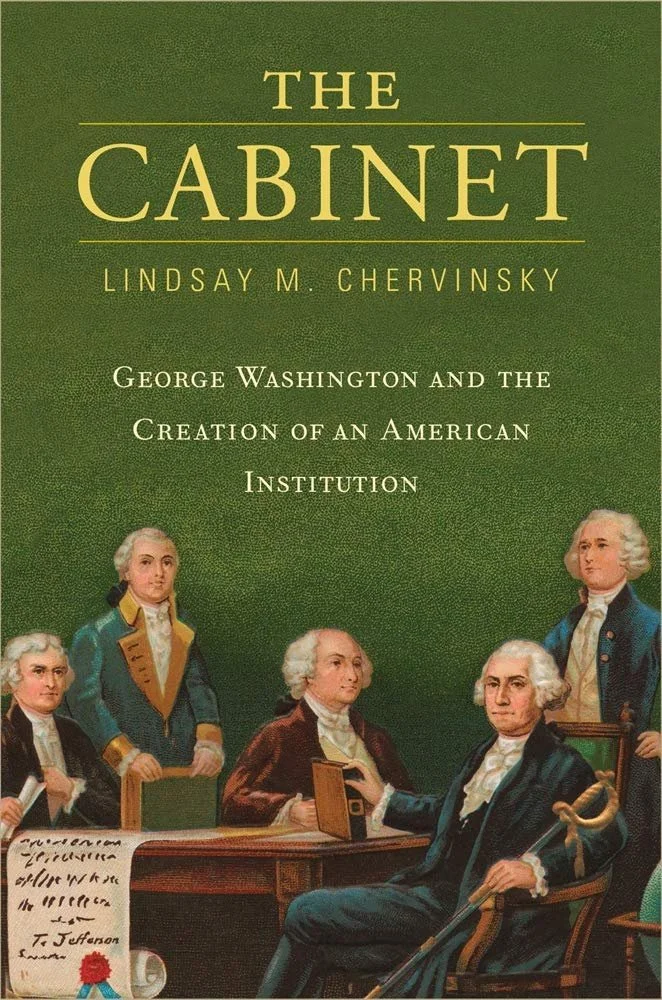Lindsay M. Chervinsky
Lindsay M. Chervinsky is Executive Director of the George Washington Presidential Library. She is the author of award-winning The Cabinet: George Washington and the Creation of an American Institution and the co-editor of Mourning the Presidents: Loss and Legacy in American Culture. Dr. Chervinsky was a historian at the White House Historical Association. She regularly writes for public audiences in publications including the Wall Street Journal, Time Magazine, USA Today, CNN.com, Washington Monthly, and the Washington Post and is a frequent presidential commentator on national TV and radio. Her next book, a biography of John Quincey Adams, will be published by Basic Books in 2028. Chervinsky lives in Alexandria, Virginia.
Making the Presidency: John Adams and the Precedents That Forged the Republic
An authoritative account of the second president of the United States that shows how John Adams's leadership and legacy defined the office for those who followed and ensured the survival of the American republic.
The United States of 1797 faced enormous challenges, provoked by enemies foreign and domestic. The father of the new nation, George Washington, left his vice president, John Adams, with relatively little guidance and impossible expectations to meet. Adams was confronted with intense partisan divides, debates over citizenship, fears of political violence, potential for foreign conflict with France and Britain, and a nation unsure that the presidency could even work without Washington at the helm.
Offering a portrait of one of the most fascinating and influential periods in US history, Making the Presidency is a must-read for anyone interested in the evolution of the presidency and the creation of political norms and customs at the heart of the American republic.
Oxford University Press, 2024
The Cabinet: George Washington and the Creation of an American Institution
Winner of the DAR Excellence in American History Book Award
Winner of the Thomas J. Wilson Memorial Prize
“Cogent, lucid, and concise…indispensable guide to the creation of the cabinet. With her groundbreaking study, we can now have a much greater appreciation of…one of the major legacies of George Washington’s enlightened statecraft.” ―Ron Chernow, author of Washington: A Life
The US Constitution never established a presidential cabinet―the delegates to the Constitutional Convention explicitly rejected the idea. So how did George Washington create one of the most powerful bodies in the federal government?
On November 26, 1791, George Washington convened his department secretaries―Alexander Hamilton, Thomas Jefferson, Henry Knox, and Edmund Randolph―for the first cabinet meeting. Why did he wait two and a half years into his presidency to call his cabinet? Because the US Constitution did not create or provide for such a body. Washington was on his own.
Faced with diplomatic crises, domestic insurrections, and constitutional challenges―and finding congressional help lacking―Washington decided he needed a group of advisors he could turn to. He modeled his new cabinet on the councils of war he had led as commander of the Continental Army. In the early days, the cabinet served at the president’s pleasure. Washington tinkered with its structure throughout his administration, at times calling regular meetings, at other times preferring written advice and individual discussions.
Lindsay M. Chervinsky reveals the far-reaching consequences of Washington’s choice. The tensions in the cabinet between Hamilton and Jefferson heightened partisanship and contributed to the development of the first party system. And as Washington faced an increasingly recalcitrant Congress, he came to treat the cabinet as a private advisory body to summon as needed, greatly expanding the role of the president and the executive branch.
Harvard University Press, 2022



